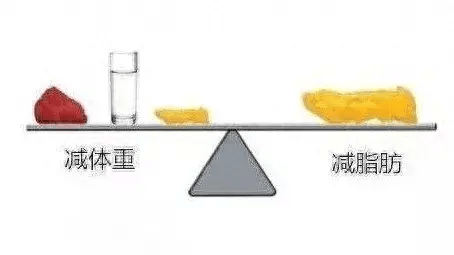When it comes to weight loss, have you clarified your target? During the weight loss process, are you losing weight, water, muscle, or fat?
Weight reduction refers to the decrease in body weight, which may include loss of water, waste excretion, or muscle consumption, and does not fully reflect the reduction of body fat.
Fat loss refers to the reduction of fat in the body, which is the truly healthy and effective way to lose weight. Fat molecules are large with low density; excessive fat accumulation not only affects aesthetics but, more importantly, increases the risk of various chronic diseases, such as cardiovascular diseases, diabetes, and hypertension.
When we successfully reduce the fat content in our bodies, we will become slimmer, and the functions of the body will improve, reducing the burden on organs, thereby enhancing overall health.
Simply pursuing weight loss may involve some extreme methods, such as excessive dieting. Although you may notice a quick decrease in weight in the short term, the body will prioritize breaking down glycogen in the muscles and releasing water. You may be losing more water and muscle rather than fat.
The loss of muscle means a decrease in basal metabolic rate, which means you can no longer consume as many calories as before. You may become prone to gaining weight again, and once you return to a normal diet, it will be easy to rebound in weight.
Therefore, during the weight loss process, we should focus more on reducing fat while preserving muscle. Muscle is small in volume and does not take up much space; it is a valuable tissue in the body. Well-developed muscles can effectively increase basal metabolic rate, and after losing weight, body proportions will also look better.
To achieve fat loss without losing muscle, a series of scientific and reasonable methods need to be adopted.
1. In addition to controlling calories, ensure adequate intake of high-quality protein, such as chicken breast, fish, shrimp, legumes, etc. Protein is the key nutrient for maintaining muscle mass. Food should mainly be prepared using low-oil and low-salt cooking methods like steaming or boiling to avoid spikes in calorie intake.
2. Control the intake of carbohydrates; during weight loss, it is advisable to reduce intake by half and choose complex carbohydrates, such as whole grain bread and oats, which take longer to digest. Avoid excessive refined carbohydrates, such as white bread and candies, which can easily spike blood sugar.
3. Regular strength training. Engaging in strength training three times a week can stimulate muscle growth and maintenance, increase muscle mass, and improve basal metabolic rate, helping to maintain muscle while losing fat.
We can choose equipment such as barbells, dumbbells, and engage in bodyweight exercises like push-ups, lunges, squats, and mountain climbers.
4. Aerobic exercise is also essential, but it should be done in moderation. Prolonged excessive aerobic exercise can break down fat while also consuming muscle, which is not beneficial for increasing basal metabolic rate.
Therefore, high-intensity interval training (HIIT) and other more efficient aerobic methods can be chosen, requiring only 20 minutes to burn fat while also exercising muscles, avoiding muscle loss.


